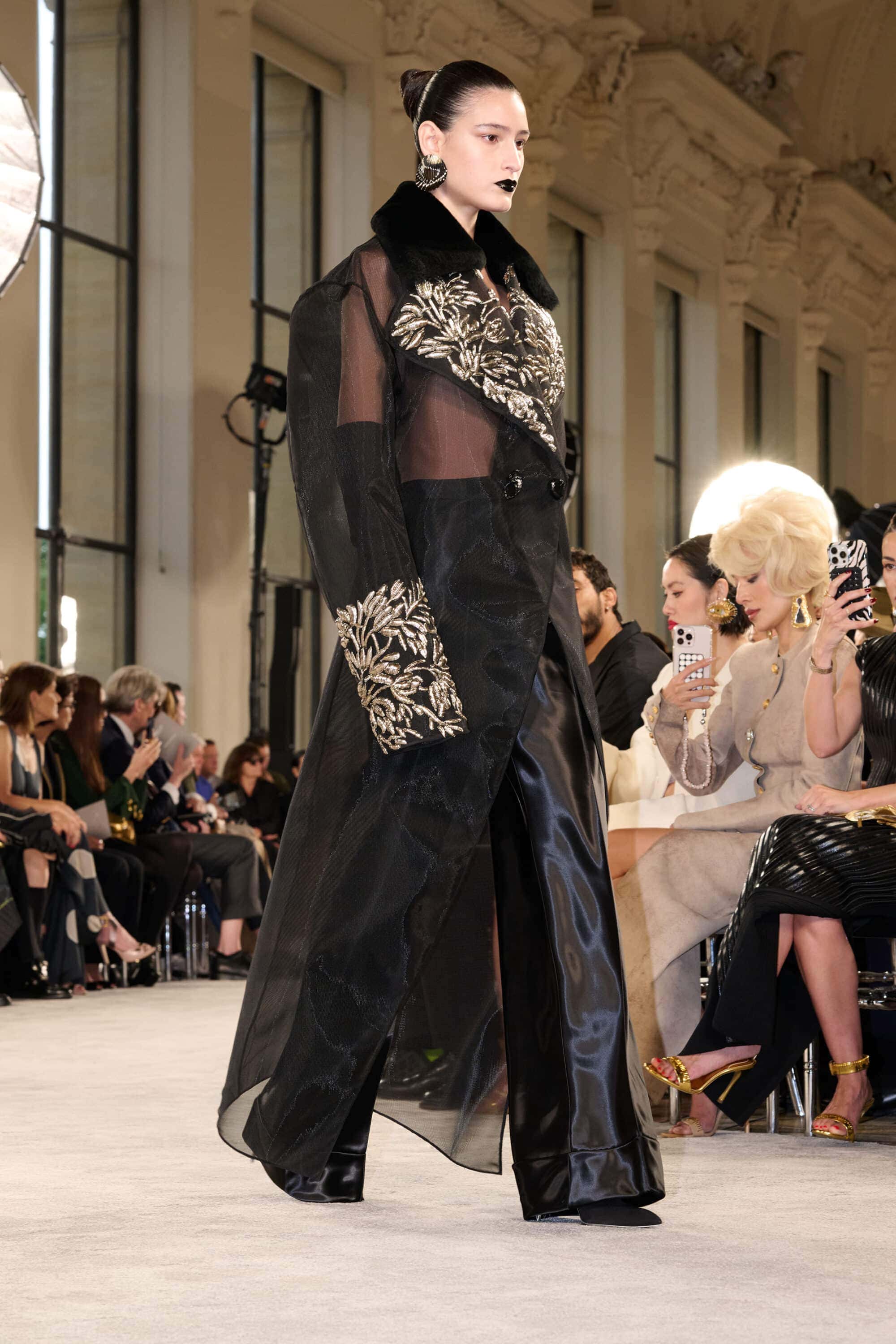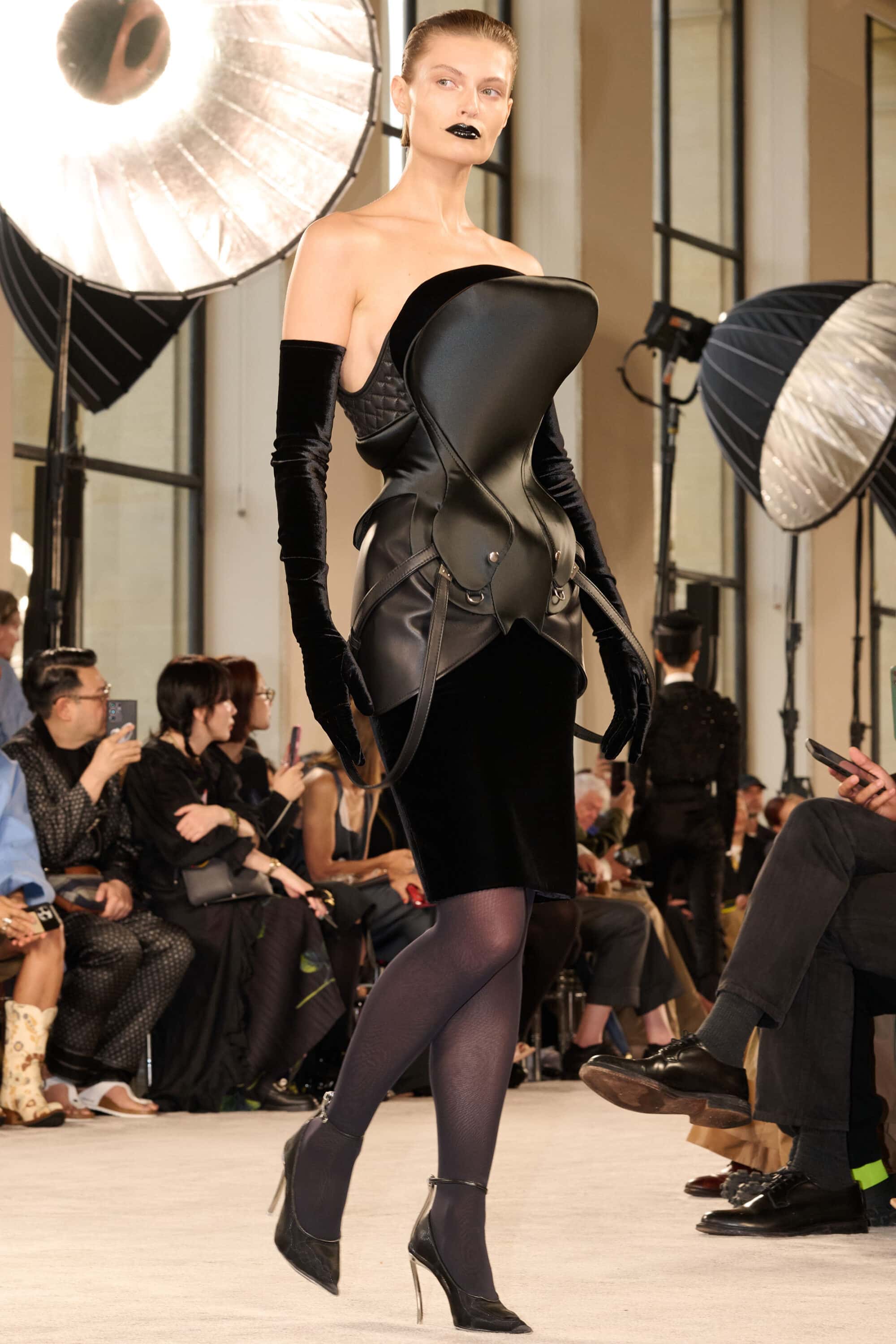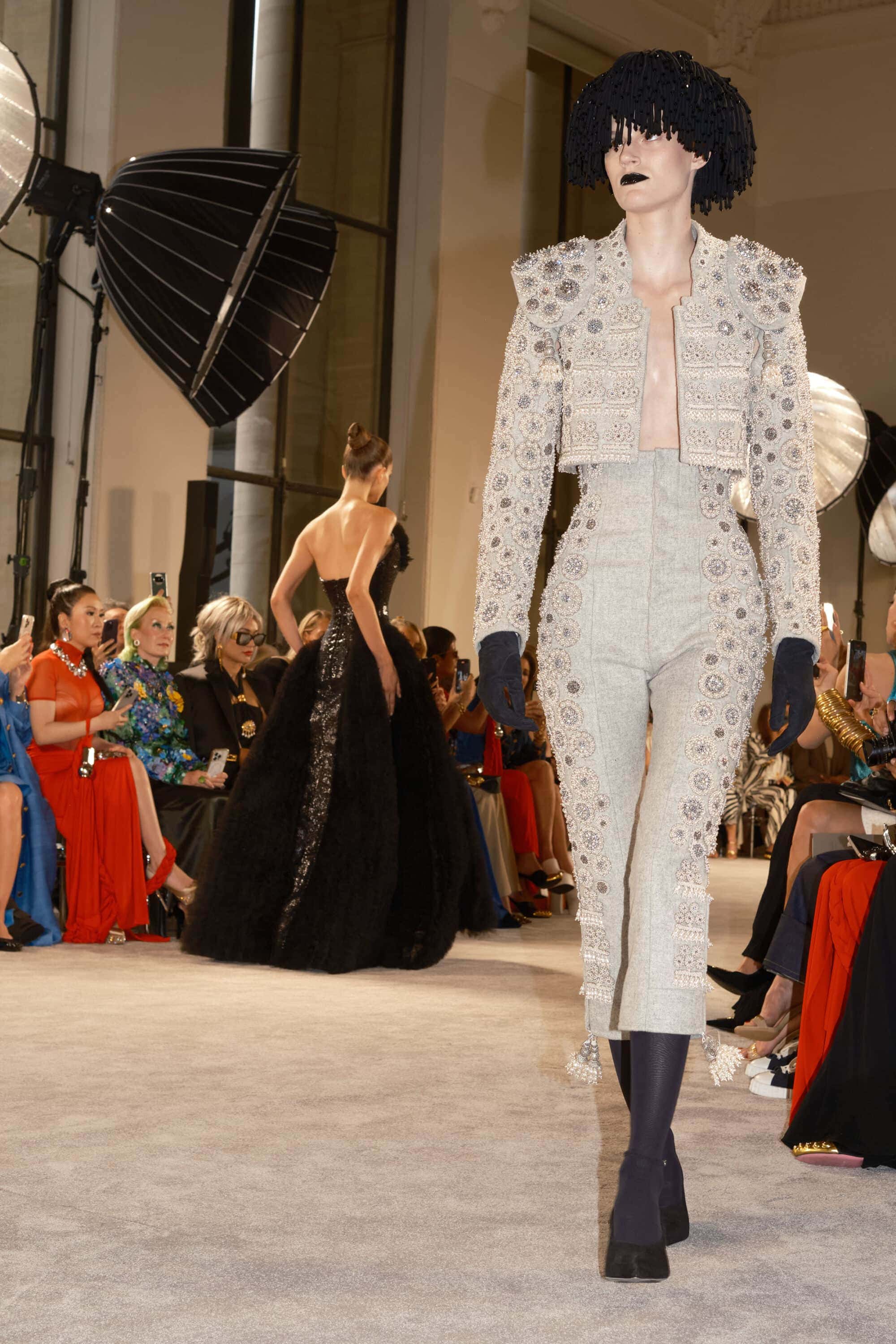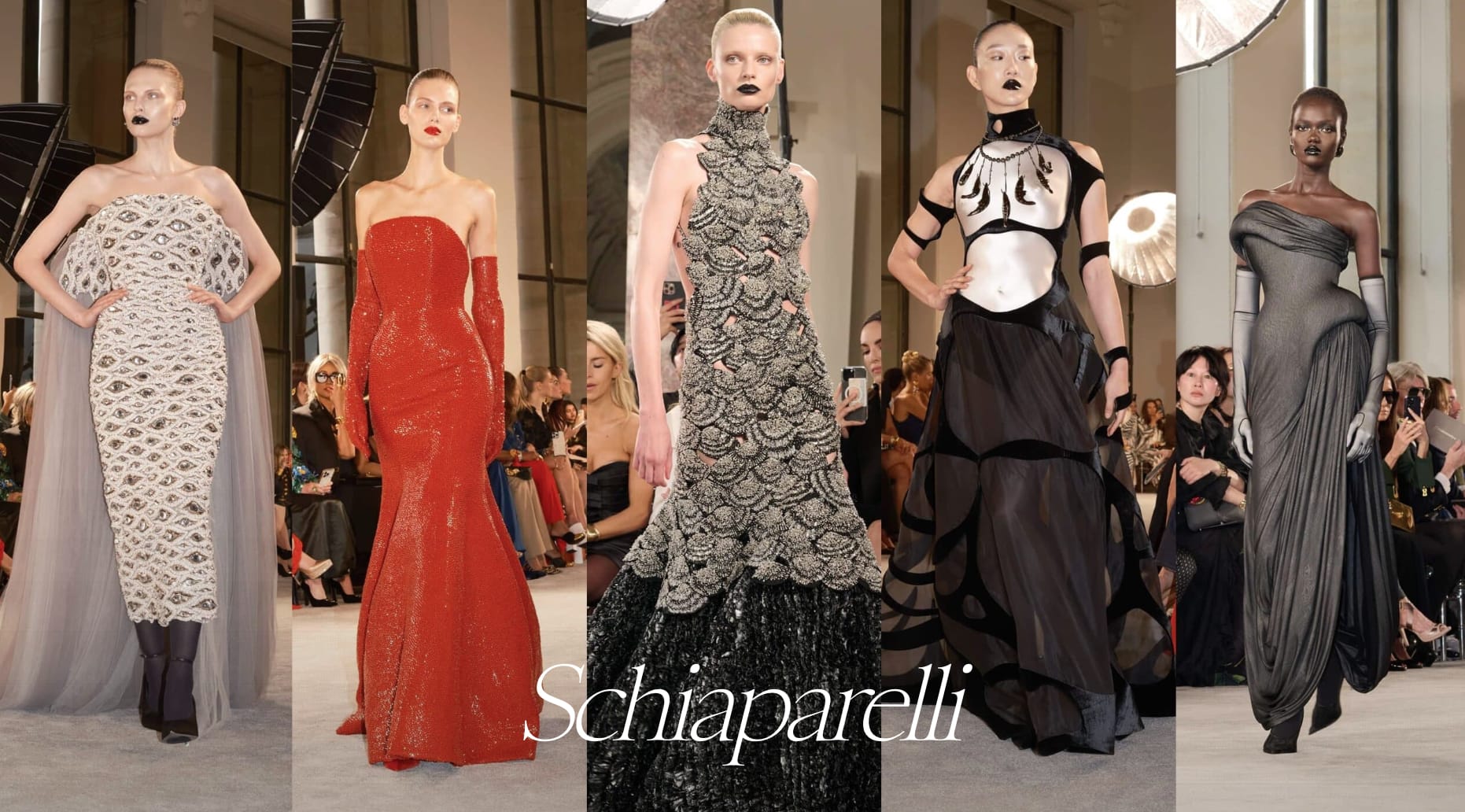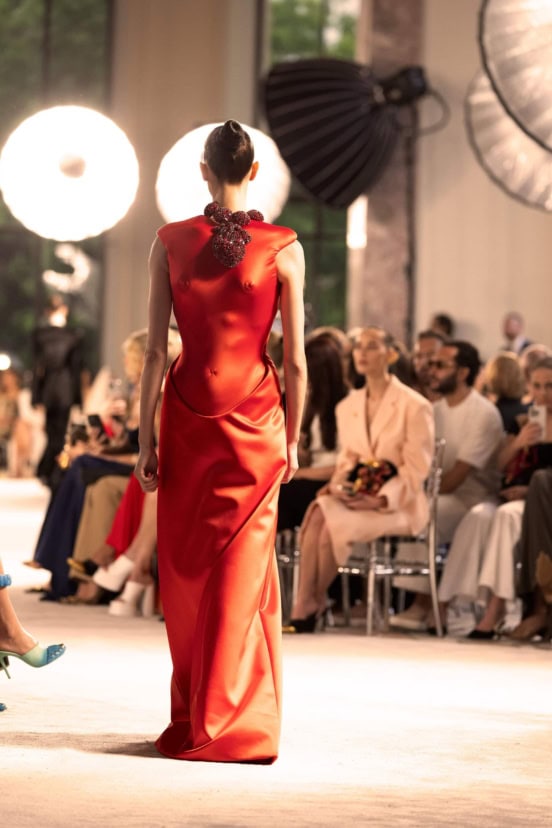Monumental Whispers: Daniel Roseberry’s Quiet Storm
Schiaparelli‘s innovative Fall 2025 couture fashion review
By Mackenzie Richard Zuckerman
Under the gilt ceilings of Place Vendôme, Daniel Roseberry brought his trilogy at Schiaparelli to a close with a collection that felt less like a finale and more like a sacred artifact. For Fall 2026, the designer proposed not just a show, but a time capsule—a body of work so resolved in concept and technique, it felt destined for a museum. This wasn’t spectacle in the traditional sense. There were no viral gimmicks, no oversized lungs or lions. Instead, Roseberry stripped away the noise and leaned into the quiet confidence of a house finally at peace with its power. And yet, the voice was still loud—just more sure of itself.
The collection, Back to the Future, imagined Elsa Schiaparelli’s departure from Paris in 1940 as both a creative metaphor and emotional provocation. Rendered in a stark palette of black, white, and carefully deployed drops of red, the show embraced a chiaroscuro tension—between past and future, softness and severity, fantasy and form. Gone were the corsets, but not the control. Shoulders squared like toy soldiers gave way to bias-cut liquidity. Donegal wool jackets were embedded with anatomical ceramics, parasols accompanied surrealist embroidery, and saddled harnesses hinted at BDSM-coded subversion, nestled within an otherwise demure restraint. This was couture as contradiction: sharp, sensual, and stripped to its essentials.
Roseberry didn’t deliver spectacle—he delivered stillness. And in doing so, he reminded us that quiet confidence can speak louder than couture’s loudest gestures.
THE COLLECTION
THE VIBE
Sculptural Eroticism, Surrealist Restraint, & Chiaroscuro Tension
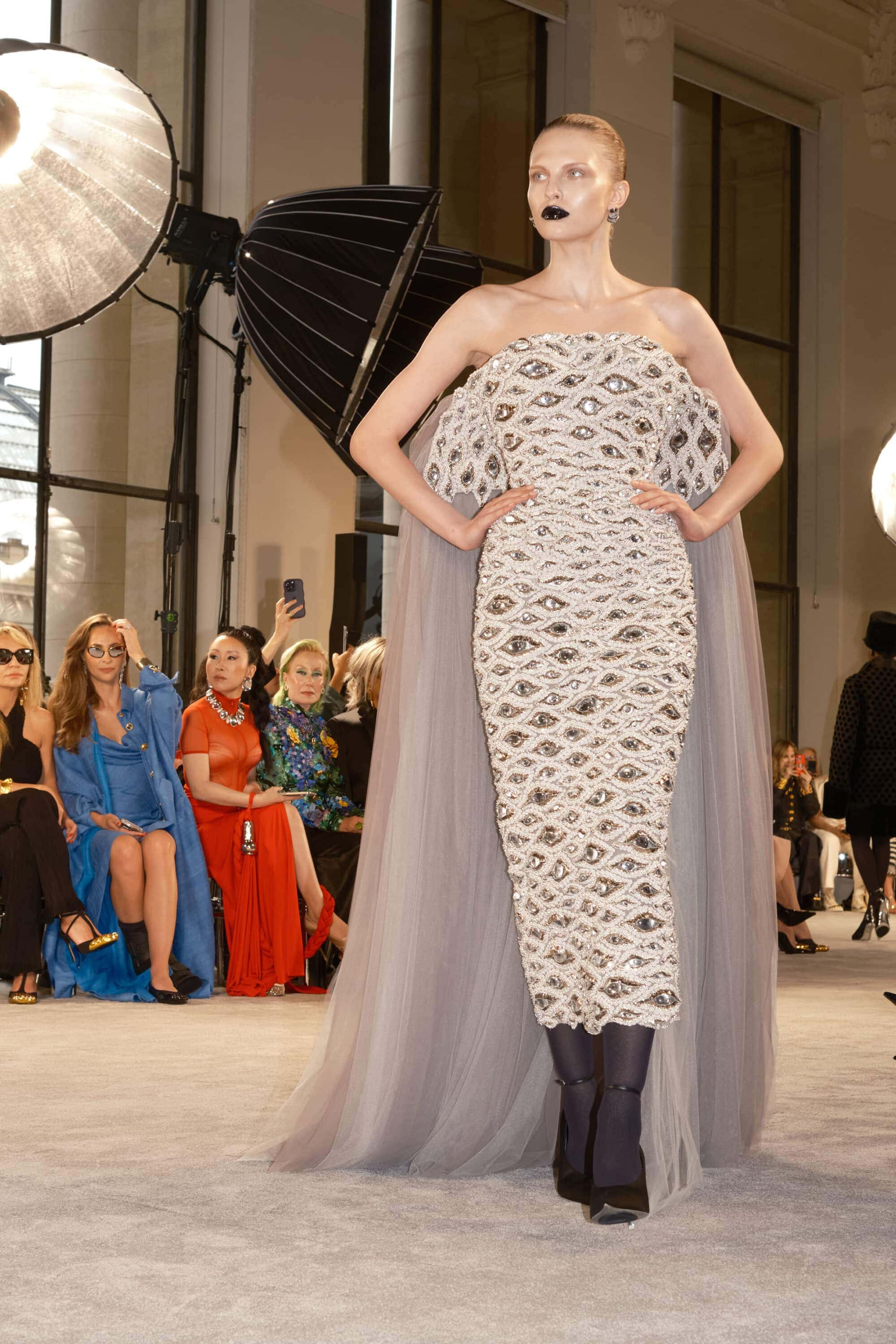
Since taking the helm in 2019, Roseberry has built Schiaparelli into a couture house defined by tension—between art and fashion, form and fantasy, reverence and rebellion. In many ways, this collection was his most archivally entrenched and yet his most forward-thinking. He pulled directly from 1929-era silhouettes and photographic references but inverted them—removing the corsetry, rethinking proportion, and blurring lines between day and nightwear, rigor and release. Even the “Elsa jacket,” with its sculptural shoulders and cropped cut, feels poised to enter the house’s lexicon of recurring codes.
While Schiaparelli’s established symbols—eyes, lips, keys, measuring tapes—made their appearance, they were embedded rather than emblazoned. The surrealism was quieter, internalized. One look, adorned with a gently beating heart, nodded directly to Salvador Dalí’s famed mechanical brooch—a surrealist fusion of beauty, discomfort, and invention that Elsa herself admired. “Each look is its own manifesto,” Roseberry noted, rejecting the idea of declinations or theme dilution. That ethos gave the show a curated, almost archival pace—each exit landing with the weight of an exhibit.
Daniel Roseberry’s Fall 2026 collection also succeeds as a dialogue with Elsa Schiaparelli by honoring not just her visual codes, but her provocational spirit. Rather than mimic her silhouettes or surrealist tropes at face value, Roseberry channels Elsa’s deeper ethos—her willingness to question what fashion could be. Like Elsa, who treated clothing as art and fantasy as function, Roseberry blurs the line between garment and idea: embedding anatomical forms, invoking fetishistic tension, and rejecting literalism in favor of conceptual layering. His refusal to settle for beauty alone, and his insistence on each look as a standalone creative act, mirror Elsa’s irreverent independence. This collection doesn’t merely reference her—it communes with her, extending her radical imagination into the future she helped make possible.
Yet even within this reverence, Roseberry injected edge. Harnesses and saddled elements nodded subtly to fetish codes—another tension point. There was a current of kink running beneath the surface, but one that refused caricature. In a world obsessed with spectacle, this was its inverse: couture as stillness, but no less intense.
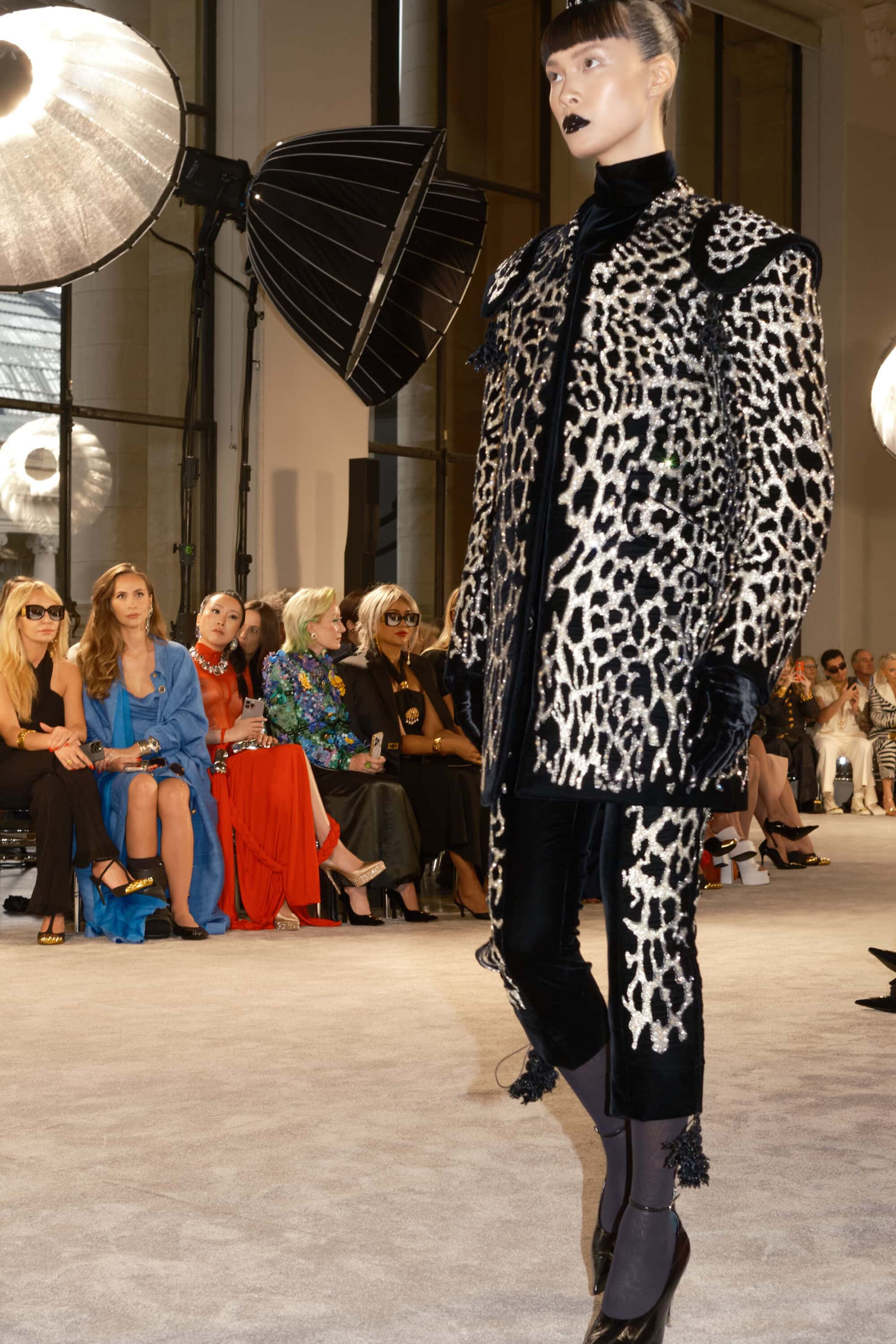
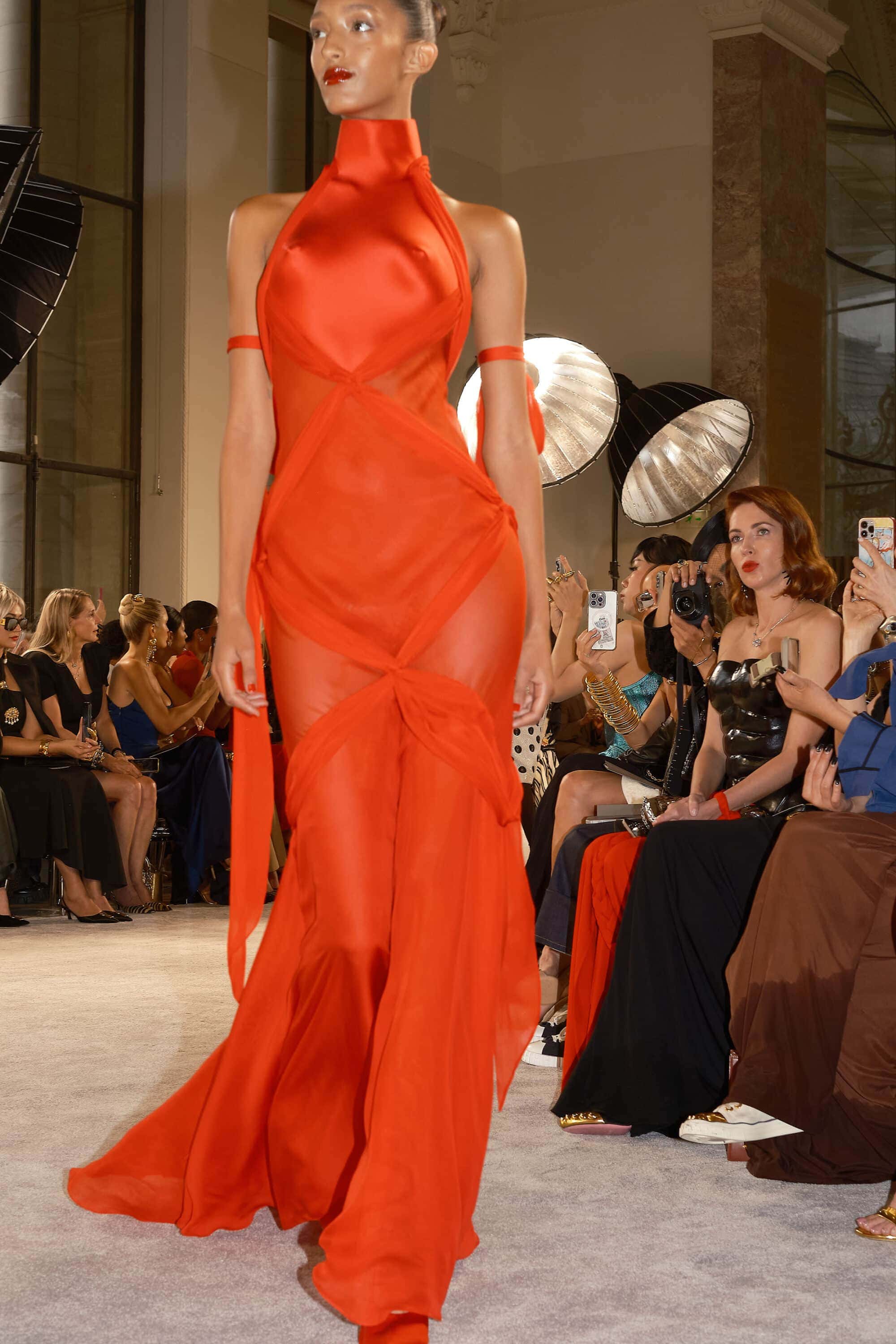
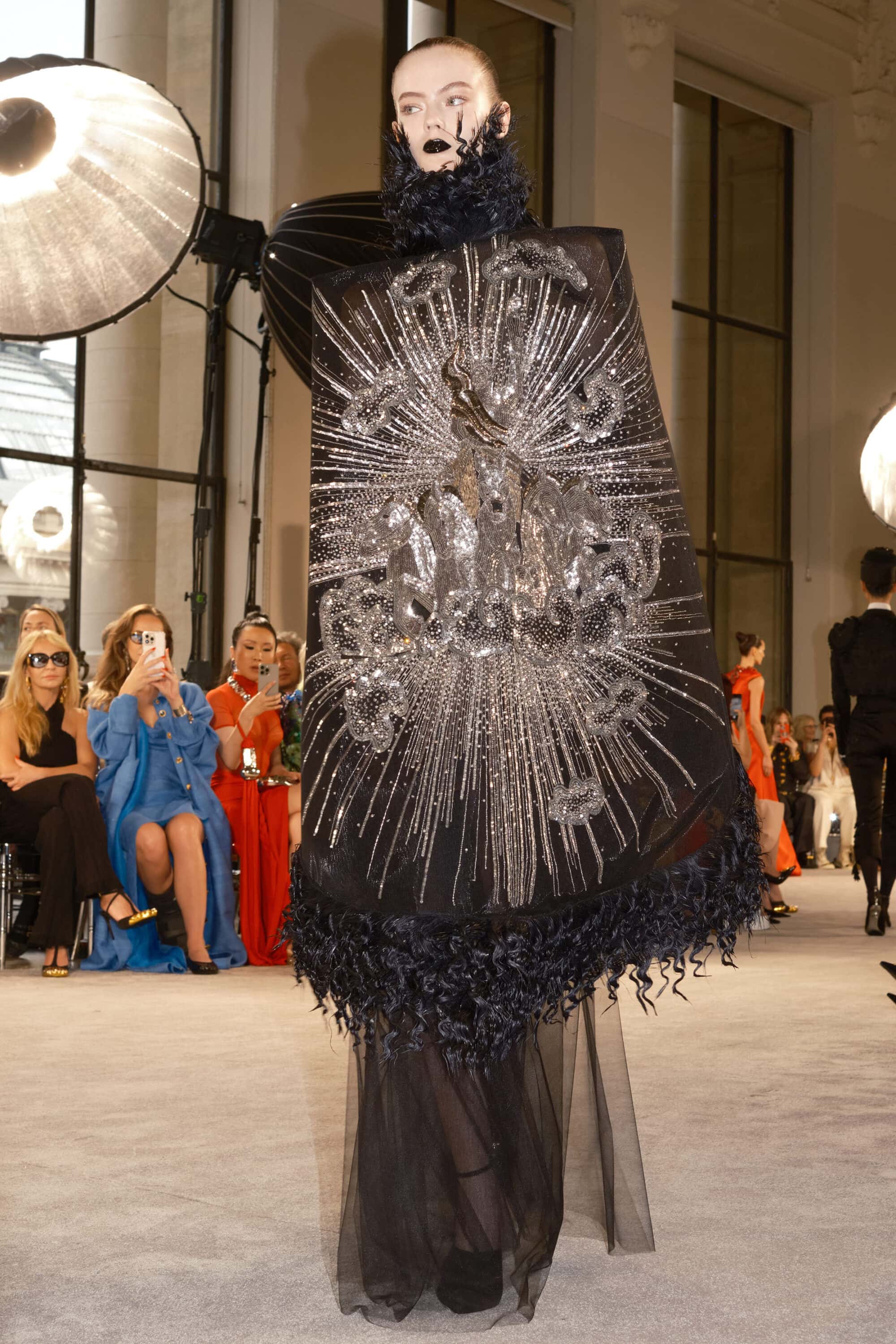
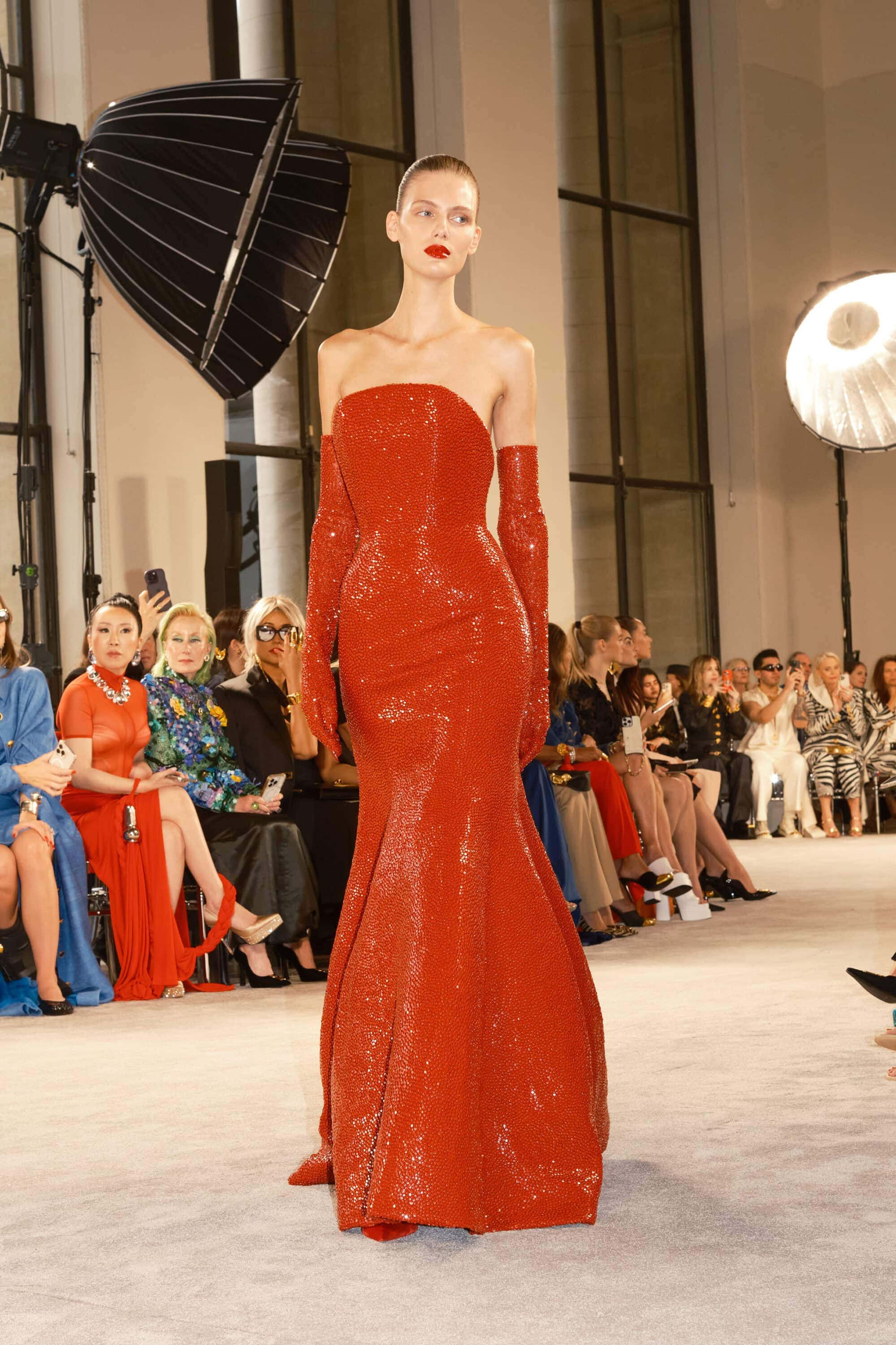
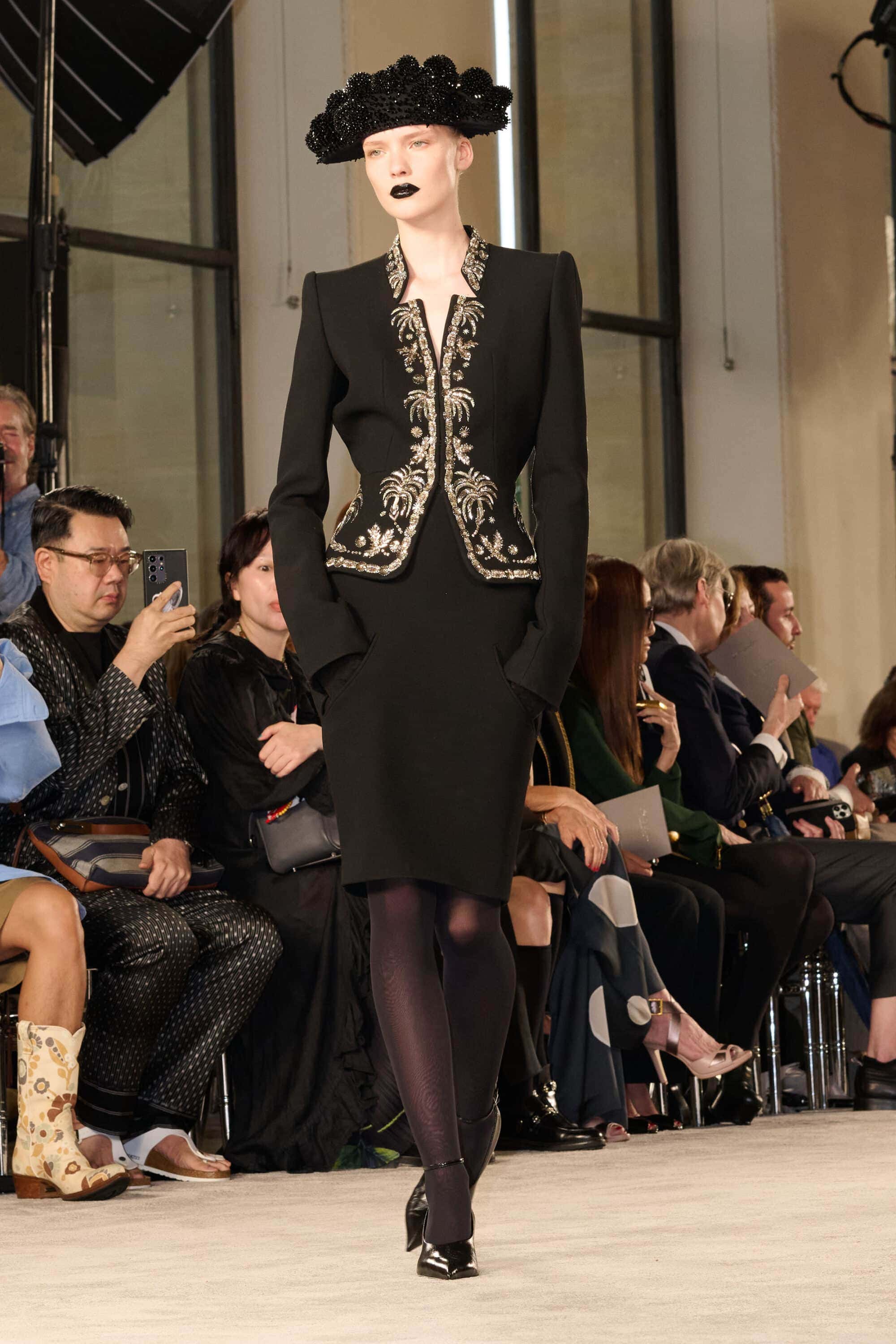
THE DIRECTION
THE QUOTE
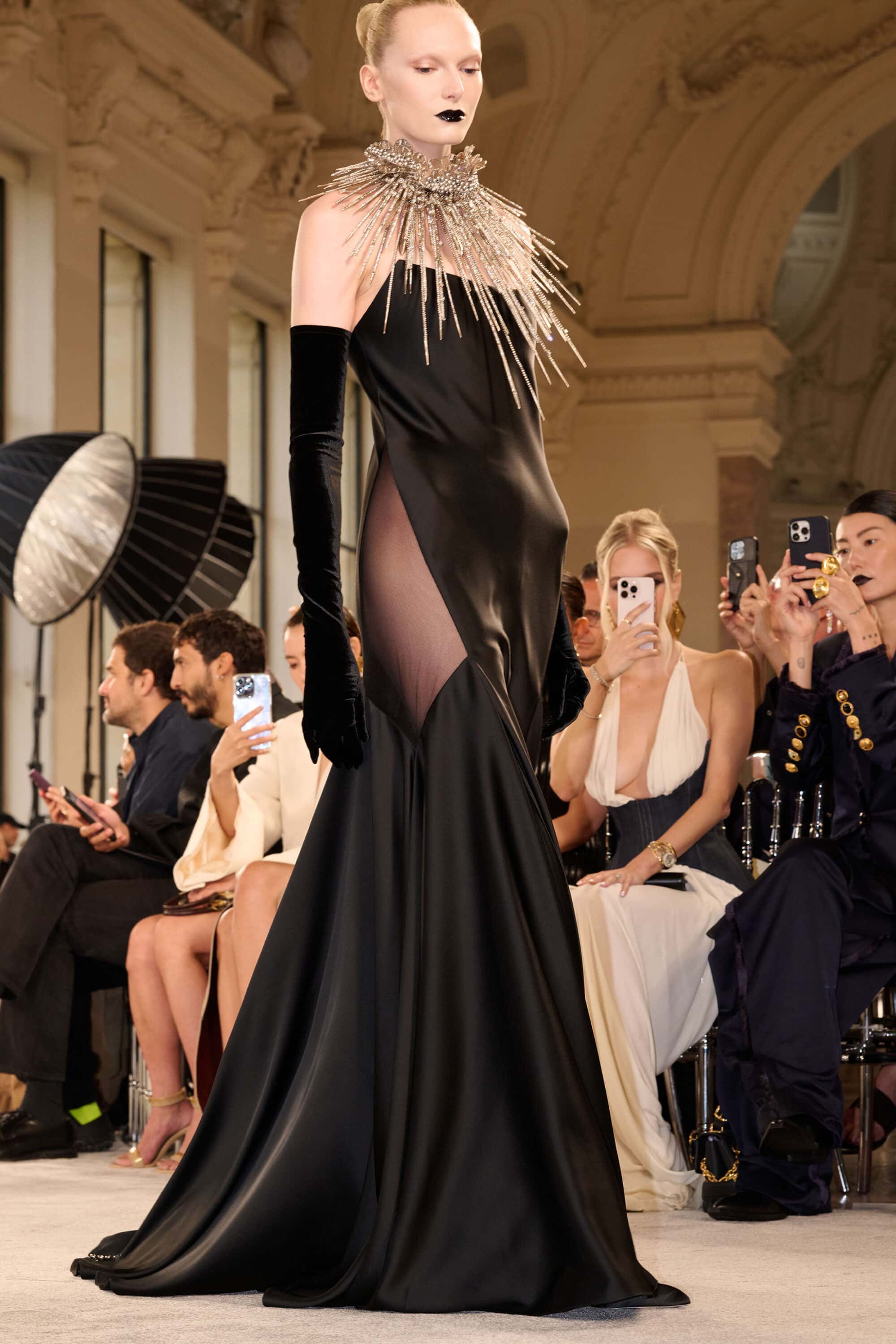
I didn’t want this one to be just beautiful. I wanted it to feel harder, more direct—less emotional, maybe, but more honest. It’s the end of a trilogy, and now it’s time to restructure everything: the process, the atelier, the way we create. If you want to change the result, you have to change the process.
– Daniel Roseberry
THE WRAP UP
If Phoenix was resurrection and Icarus was ambition, Back to the Future is a moment of legacy in real time.
Roseberry is no longer trying to prove Schiaparelli’s relevance—he’s defining its mythology. And yet, this collection doesn’t mark a break so much as a pause—a moment to consolidate, reflect, and quietly set the stage for what’s next.
Unlike some of his earlier, more theatrical outings, this season felt notably pared back—less immediate in its impact, but more layered in its meaning. There’s a quiet power in its subtlety, a confidence that doesn’t rely on shock but rewards closer attention. The references to archive are more deliberate, the surrealism more internalized. Roseberry continues to draw on history with reverence, but never as static homage. He has a gift for taking what we think we’ve seen before and rendering it newly strange, newly beautiful.
And perhaps that’s what makes this a successful close to his trilogy: it signals a pivot. In his post-show remarks, Roseberry hinted at internal restructuring—a desire to surprise, to shake loose the expectations he’s now established. Back to the Future may not be his most explosive collection, but it may be one of his most foundational. It lays down the architecture for whatever bold new language he speaks next.
